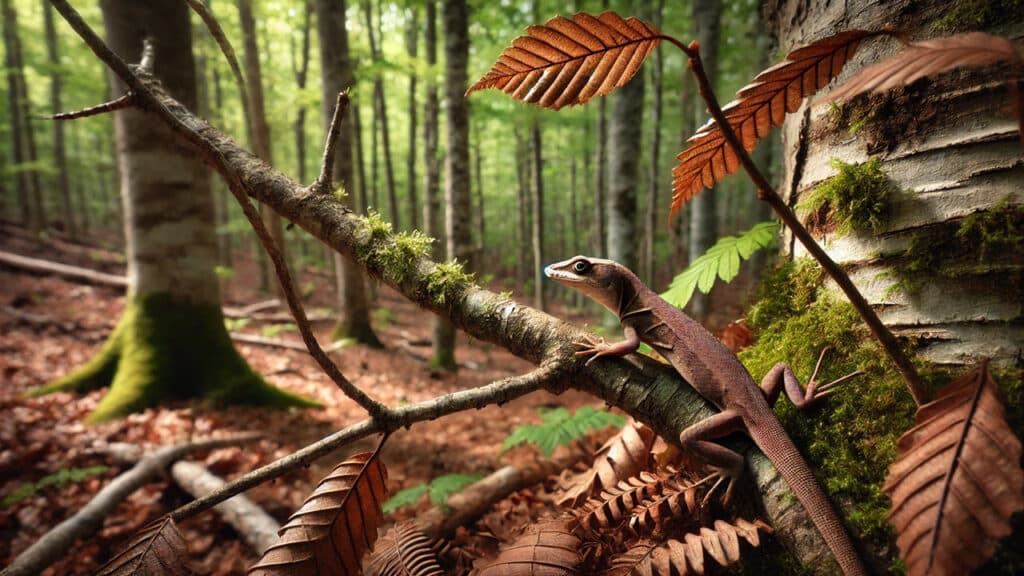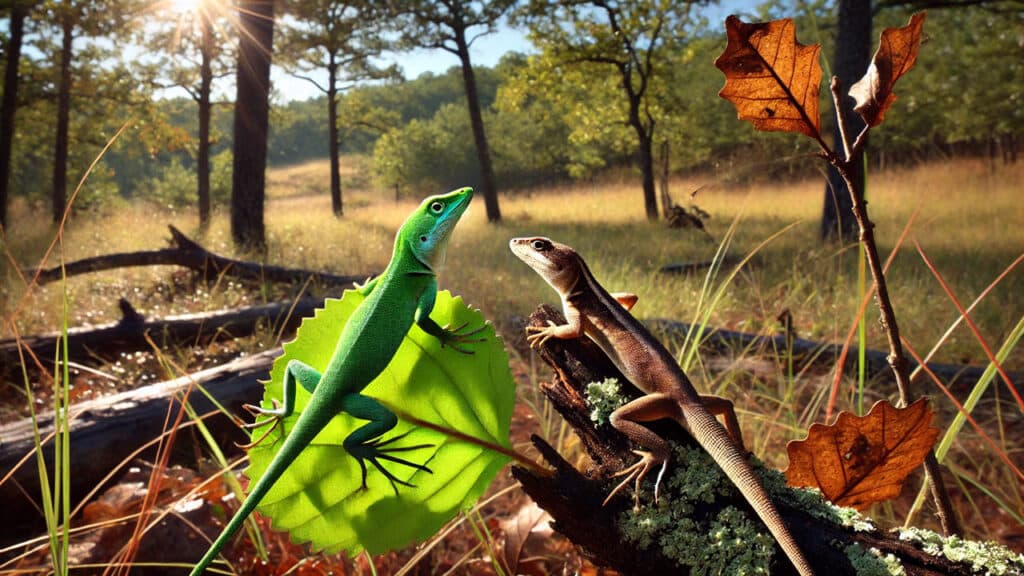
There are eleven lizard species that call North Carolina home. Well, thirteen, if you include the two introduced species, the Mediterranean gecko and the Texas horned lizard. This month’s weird and wonderful focus is on the Green Anole, Anolis carolinensis. This lizard ranges throughout the coastal plain, piedmont, and foothills of the state and can be green, brown, or green and brown in color. Many lizards found in the brown form have a lighter stripe that runs down their back, and a few individuals may even have a crest or ridgeline along their neck and back. Green anoles can be found on the ground, along fences, on structures, and even in trees, as they have sticky toe pads that help their grip.

Males of this species are highly territorial: when approached by a rival, a male green anole will extend his bright pink dewlap, or throat fan, and bob his head up and down. If that is not enough to frighten away the intruder, a fight may ensue. One male’s territory can be as small as 1 cubic meter, but it can overlap with the home ranges of 2 to 3 females, whom he courts by bobbing his head up and down. The sight of a male performing his head bobbing sets off a domino effect of physiological responses in the female, which eventually leads to her laying an egg, one at a time, throughout the spring and summer months. The eggs are laid in shallow depressions of sand, rotting wood, leaf litter, and other similar substrate; when the baby lizards hatch after 7 weeks, they are only around 2 ½ inches long. As the days shorten towards the end of summer, the reproductive organs of both the males and females become smaller in size. Adults and juveniles feast on small invertebrates, such as crickets, grasshoppers, and flies, but nectar has also been recorded as a source of food.

So…green anoles are like any other lizard in North Carolina? Wrong! Take another look at the first paragraph of this post, where it says, “Many lizards found in the brown form…” and mentioned that they can also come in the color green. Green anoles are weird and wonderful because they can change color from bright green to brown and vice versa! They are the only color-changing lizards that we have in our state. Their physiological color change is due to specialized cells called chromatophores. Chromatophores contain pigments and/or nanostructures that, when rearranged, result in a rapid color change. There are many different kinds of chromatophores: green anoles have melanophores, which contain organelles called melanosomes. Melanosomes exclusively hold melanin, and the ones present in dermal melanophores determine the color. Specifically, the larger an area (aka distribution) of melanosomes means more light is absorbed, resulting in a darker color being produced. Alright, so what triggers a green anole to decide to change from one color to another? That is less understood, though we know that temperature can affect how quickly chromatophores can rearrange their internal nanostructures and pigments. Thus, it has been hypothesized that these lizards change colors to control whether they absorb or reflect heat. It has also been suggested that they change color in response to social behavioral cues from other members of their species. Regardless, we North Carolinians are fortunate that these small jewels of the lizard world grace our state.
